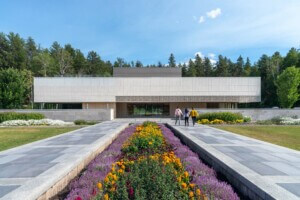Architect: Bilgin Architects
Location: Karapinar, Turkey
Completion Date: 2023
One of Europe’s largest solar fields, comprised of nearly eight square miles of photovoltaic cells, is located in the desert outside of Karapinar, a municipality in Central Turkey. Unusable for agricultural purposes, the site was designated an energy specialization area by the Turkish government, leading to the construction of Karapinar Solar Power Plant in 2020. The photovoltaic array has a capacity of 1,350 megawatts during peak use.
Bilgin Architects, an Istanbul-based studio, was selected through a national competition to design a central control building for the solar field. The structure was completed in late 2023, and features a facade of reflective stainless steel panels which mirror the conditions of the sky. On the interior, the single-story building holds office space for the plant’s engineering and management teams as well as a landscaped central courtyard.
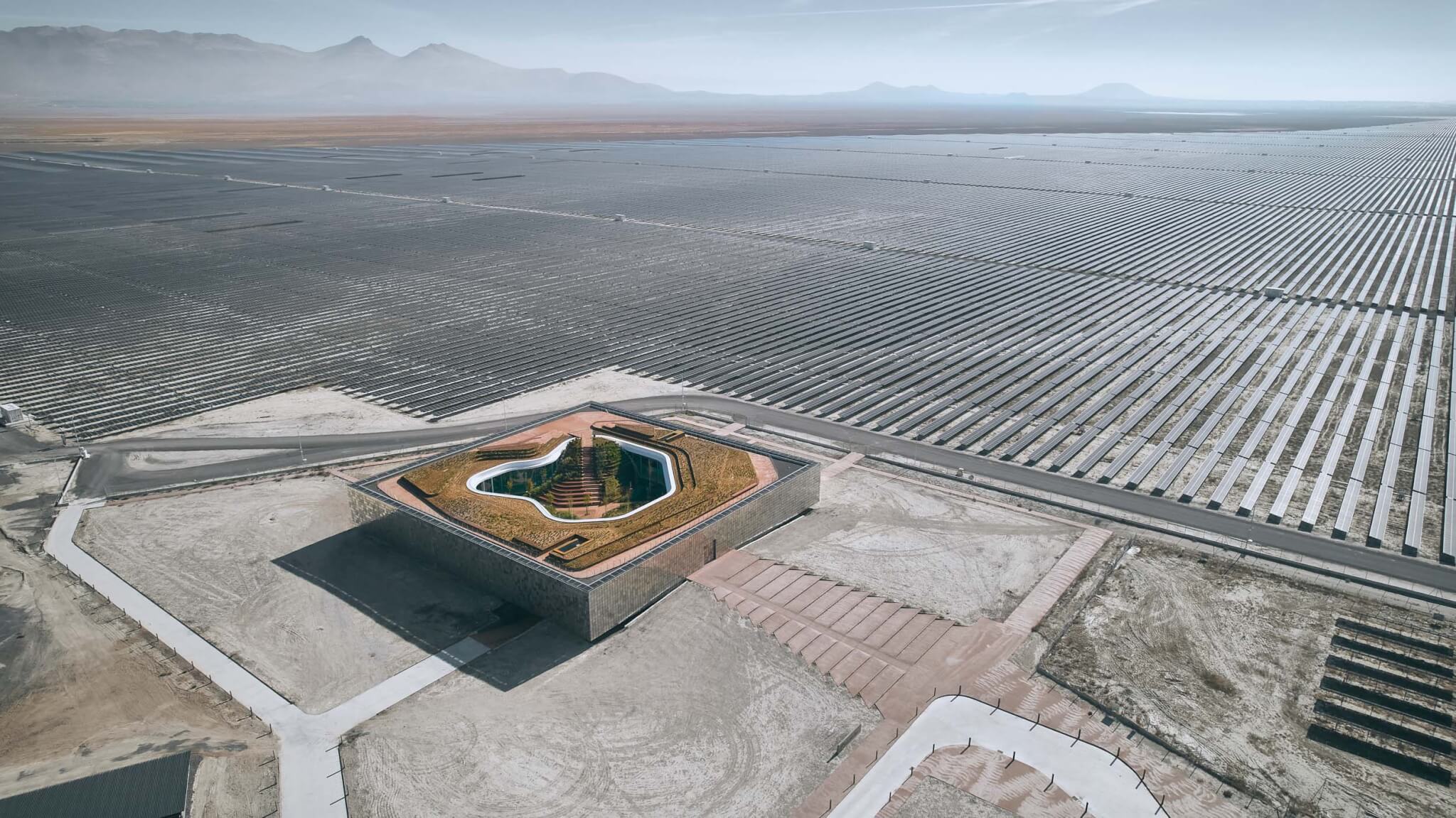
The building was sited over 100 feet away from the solar field so as to avoid casting shadows on the photovoltaic panels and is located near an electrical substation which connects the power plant to Turkey’s national energy grid.
Reflectivity was central to Bilgin Architects’s design concept. The control building is clad in an outer skin of stainless steel panels which protect an inner layer of glass from the high solar exposure of the desert. These stainless steel panels reflect their surroundings. The facade’s appearance changes based on time-of-day and weather conditions.
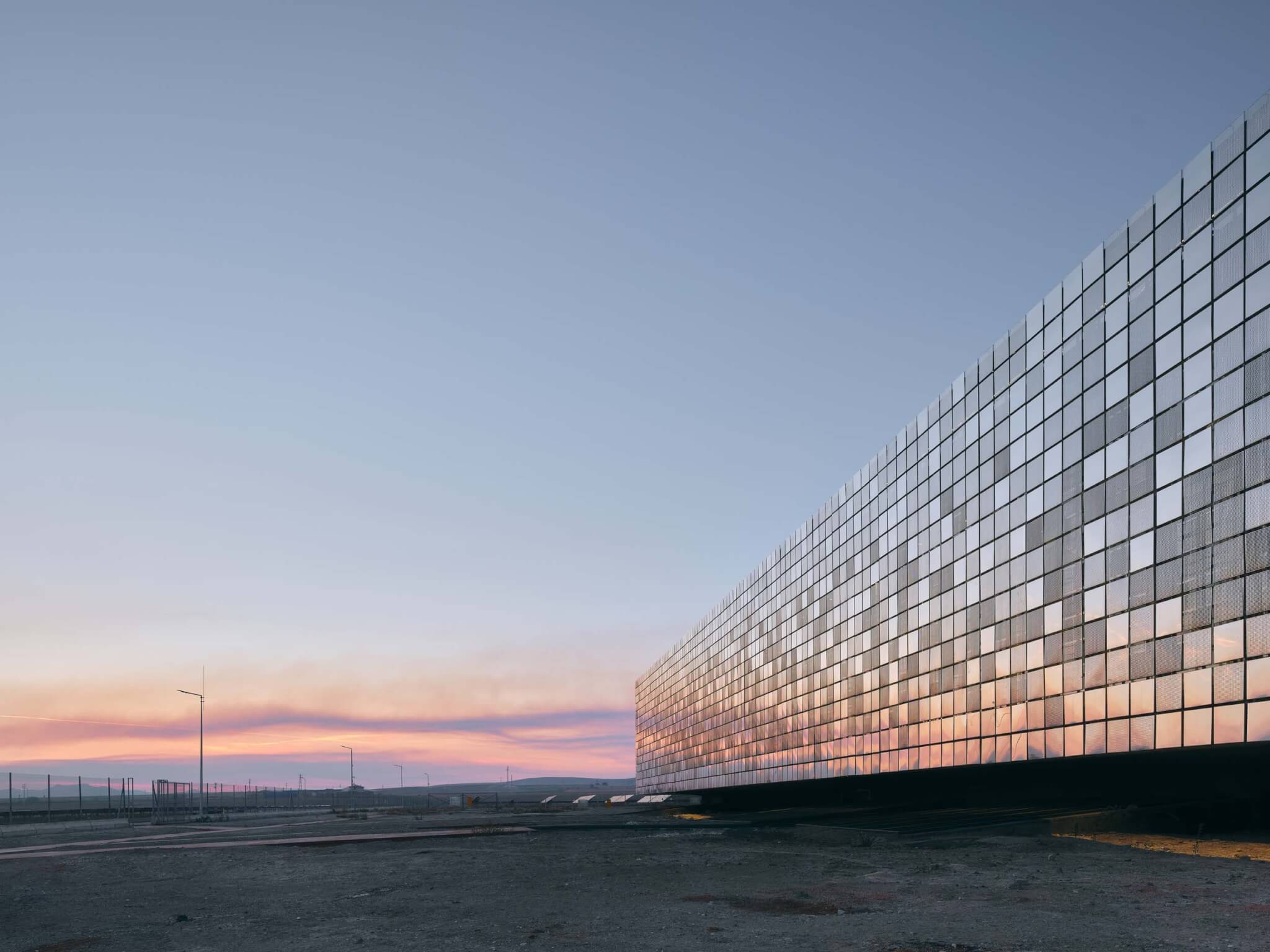
Bilgin Architects specified approximately 20 by 20 inch panels instead of a larger surface to maintain articulation across the facade and prevent the building from disappearing entirely.
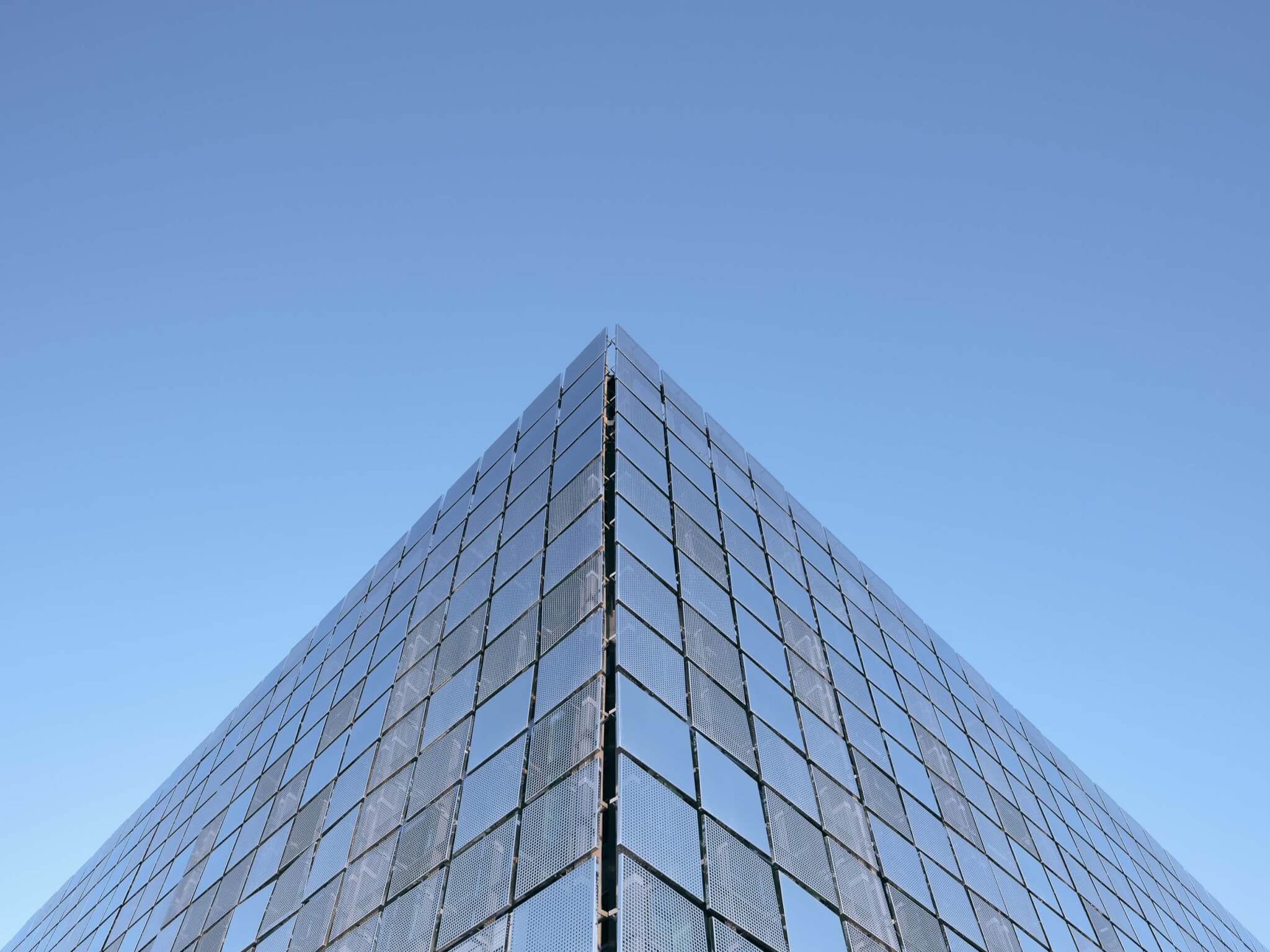
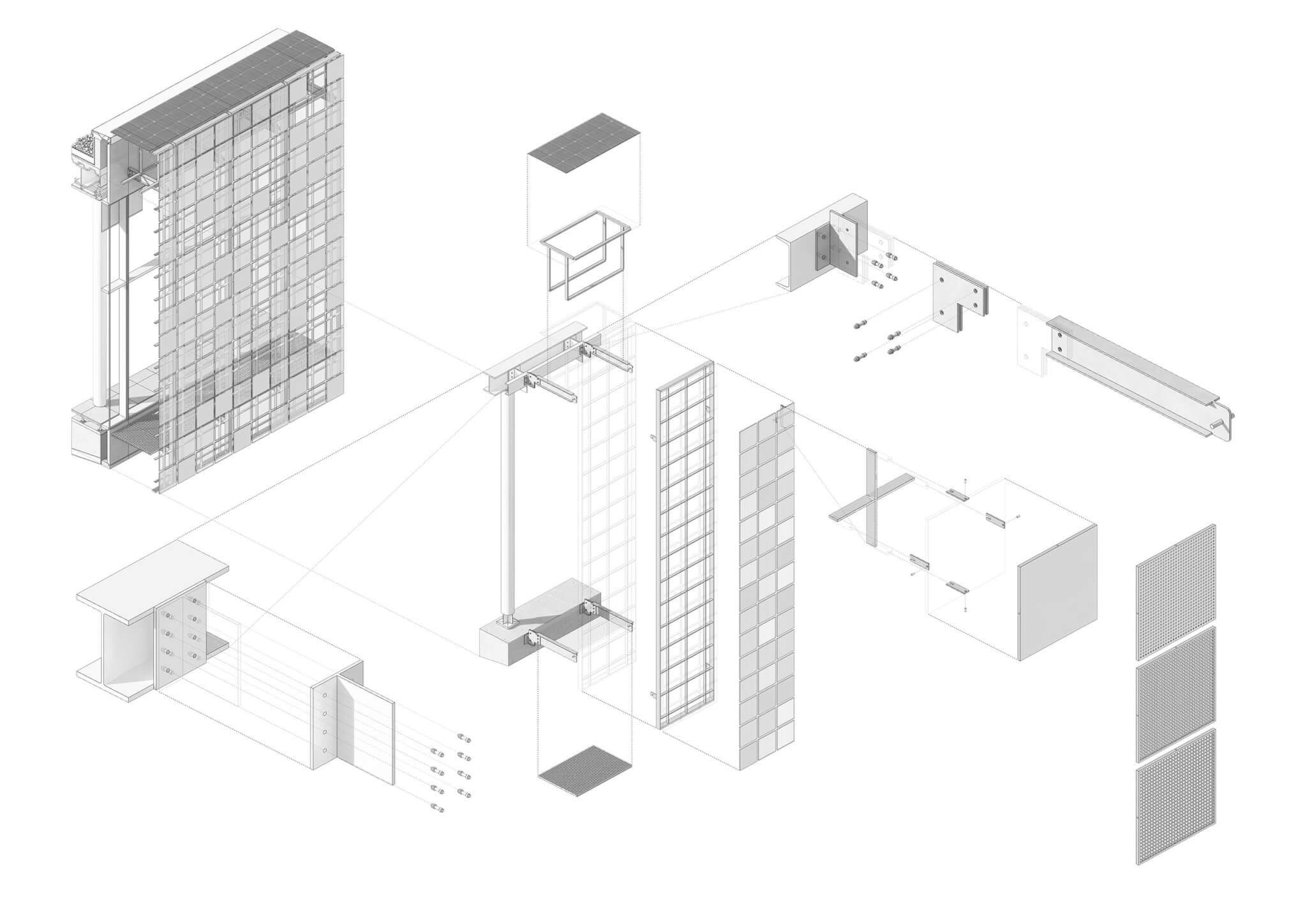
The 7,200 stainless steel panels were fabricated using four levels of perforation offering different levels of transparency. Each panel was positioned using a parametric code that sorted perforation level according to projected solar exposure across the building’s exterior surface area.
Perforation level ranges from 100 percent solid to 47 percent solid across the four panel types. In total, solar radiation on the interior was reduced by 65 percent.
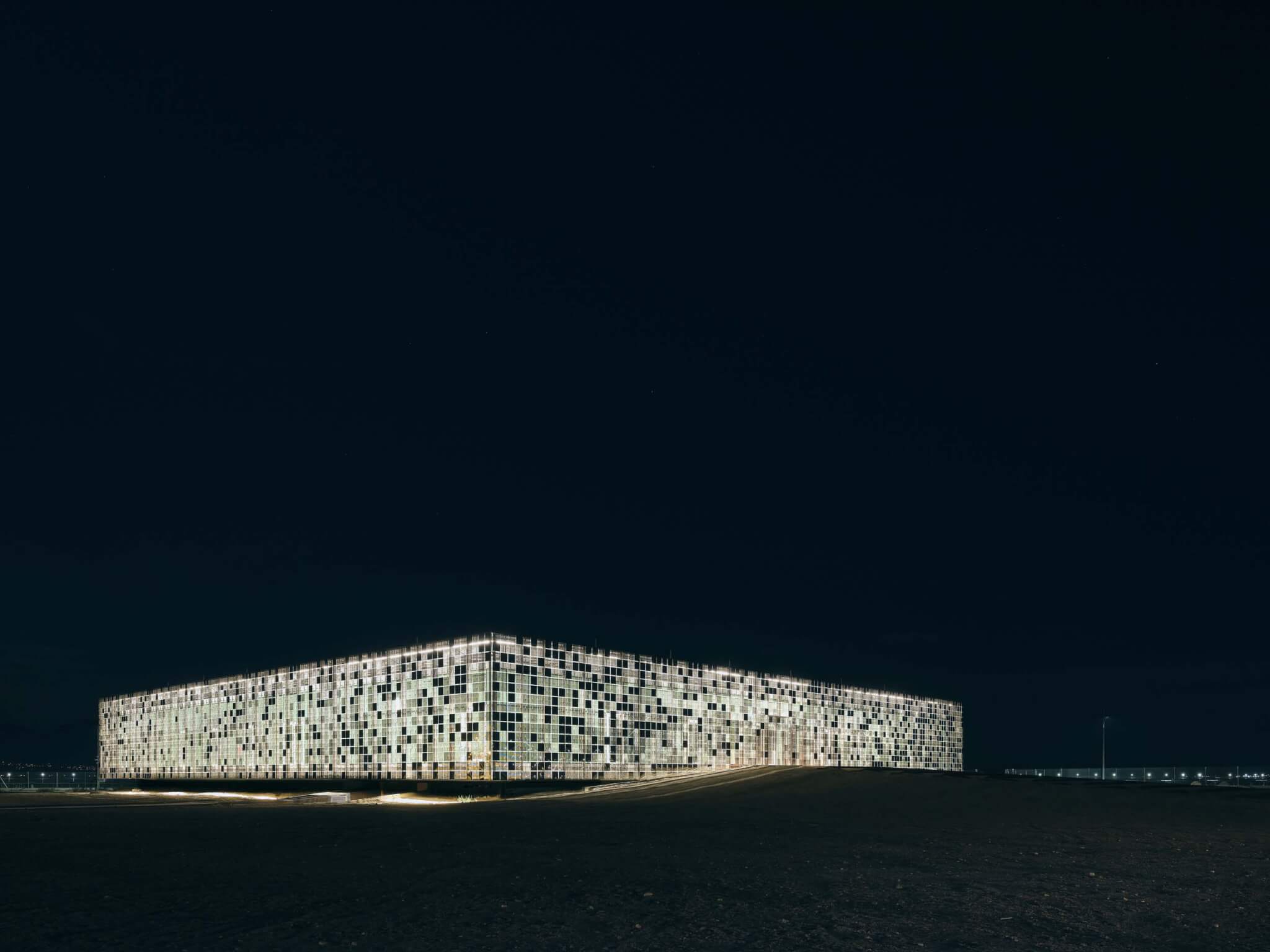
The facade, which is reflective during the day, takes on the opposite effect at night. Artificial light seeps through perforated panels, revealing the interior of the building.
Inside, the building was equipped to serve several purposes. Daily plant functions were accommodated through the provision of meeting and office space as well as storage for SCADA hardware, the technology which controls and monitors the photovoltaic array. The interior also contains a multi-purpose events space and cafeteria.
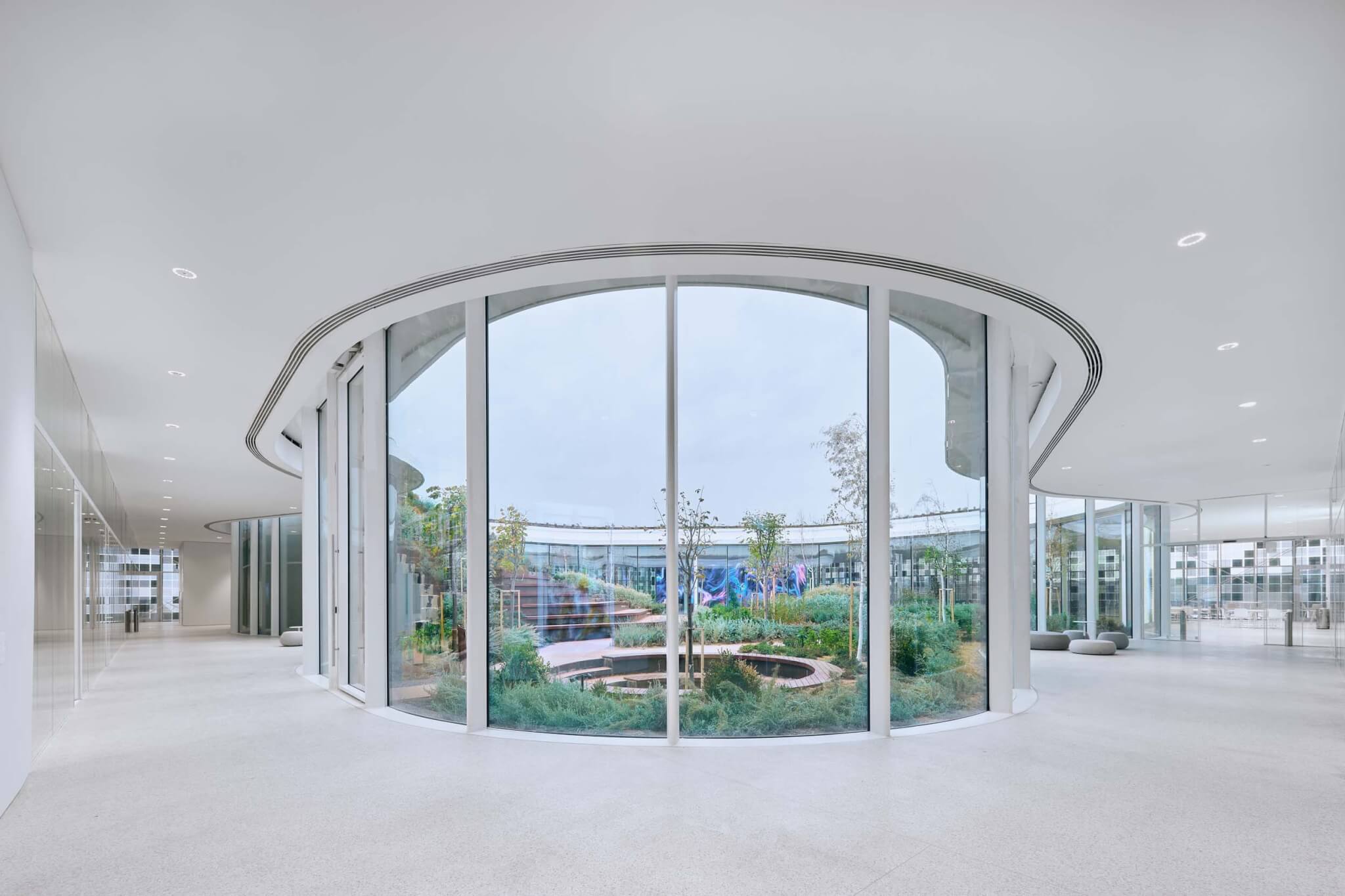
These spaces encircle a central courtyard, conceived as an oasis providing respite from the region’s harsh desert climate. The courtyard was planted with local desert species which require limited amounts of water and bloom at different times of the year, adding seasonal variety to the garden.
Additionally, a green roof above the offices captures rainwater that is filtered and reused in the garden. Trees planted within the courtyard are expected to grow over time, casting shade over the glazing which separates the interior to improve energy performance.
Caner Bilgin, founder of Bilgin Architects, told AN, “we can already say that the courtyard is creating its own micro-climate in this challenging climate. It receives wind without dust and provides a shaded area. It’s almost like a real oasis. On the other hand, it’s also a machine that contributes to the energy efficiency of the building.”
The courtyard’s organic shape was defined by the programming of the interior. The building’s cafeteria and events space extend further horizontally than the relatively narrow offices, leading to the courtyard’s irregular shape.
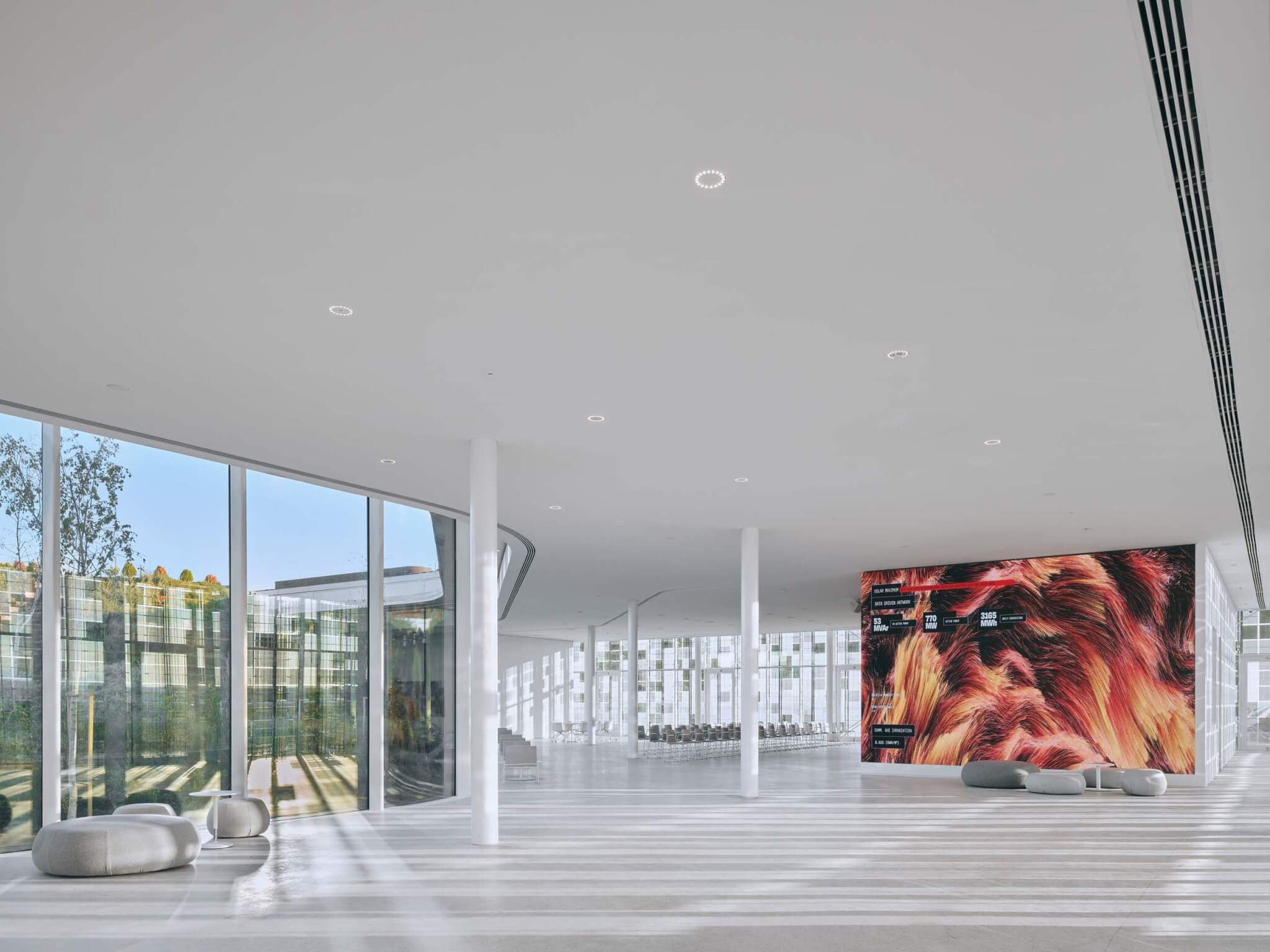
Several Turkish artists, such as Hakan Yilmaz, Ecem Dilan Köse, Süleyman Yilmaz, and Ali Tan Uçer, were commissioned to install digital artworks within the interior that convey themes related to sustainability and technology.
Though the control building’s primary purpose is to serve the operation of the solar array, Bilgin added that it “also has a semi-public service aspect. Since its opening it has been used by people of all ages and expertise levels for various engineering workshops, panels , and sessions exlaining sustainable energy to students.” For the architects, this aspect was “quite important.”
Project Specifications
- Design Architect: Bilgin Architects
- Structural Engineer: Attec Design
- Landscape Architect: Bilgin Architects, MY Landscape
- MEP & HVAC Consultant: Okutan Engineering
- Electrical Engineering: ERKE Sustainable Building Design and Consultancy
- Civil Engineer: Attec Design
- Lighting Design: UKON Lighting Consultancy
- AV/Acoustics: Mezzo Studio
- Signage/Wayfinding: Dilara Sezgin
- Fire & Life Safety Consultant: Mercek Engineering
- Facade Consultant: CWG Consultancy
- General Contractor: Kalyon Construction
- Client Representative: Kalyon Energy
- Facade System: Cuhadaroglu
- Glass: Sisecam
- Windows: Cuhadaroglu, Jansen
- Interior Finishes: AVC Gemino
- Fixtures: Vitra
- Lighting: Iguzzini, Flos
- Furniture: Mozaik Design, Tuna Ofis, B&T Design, Andreu World, Arper










